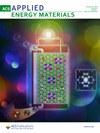Nomograms to predict occult contralateral central lymph node metastases in unilateral papillary thyroid carcinoma with ipsilateral clinical lymph node metastasis
IF 5.4
3区 材料科学
Q2 CHEMISTRY, PHYSICAL
引用次数: 0
Abstract
Background
No significant difference in disease-specific survival and recurrence-free survival exists between papillary thyroid cancer (PTC) patients with high-risk features subjected to lobectomy and thyroidectomy. However, it is unclear which type of patients with unilateral PTC combined with ipsilateral clinical involved lymph nodes (cN1) can receive a less aggressive treatment.
Methods
We collected the medical records of 631 patients diagnosed with unilateral PTC and ipsilateral cN1. These patients initially underwent total thyroidectomy and bilateral central lymph node dissection (LND), with or without lateral LND. We conducted an analysis to investigate the associations between contralateral occult central lymph node metastasis (CLNM) and clinicopathologic factors.
Results
The proportion of contralateral occult CLNM was 38.9 %. Age ≤45 years, tumor diameter >1 cm, obesity, and involvement of lymph node regions ≥2 were independent risk factors for contralateral occult CLNM. Multifocality and ipsilateral neck high-volume lymph node metastases were independent risk factors among the postoperative pathological factors. A predicting model was developed to quantify the risk of each factor, which revealed that patients without any of the risk factors mentioned above had a 20–30 % probability of contralateral occult CLNM, whereas the probability was greater than 60 % when all factors were present.
Conclusion
Based on the predictive nomograms, we proposed a risk stratification scheme based on different nomogram scores. In the debate about prophylactic central LND among contralateral central lymph node in unilateral PTC with ipsilateral clinical LNM, our nomograms provide the balance to avoid overtreatment and undertreatment through personal risk assessment.
预测同侧临床淋巴结转移的单侧甲状腺乳头状癌隐匿性对侧中央淋巴结转移的提名图
背景接受甲状腺叶切除术和甲状腺切除术的高危甲状腺乳头状癌(PTC)患者在疾病特异性生存率和无复发生存率方面没有明显差异。方法 我们收集了 631 例单侧 PTC 合并同侧临床受累淋巴结(cN1)患者的病历资料。这些患者最初都接受了甲状腺全切除术和双侧中央淋巴结清扫术(LND),包括或不包括侧淋巴结清扫术。我们进行了一项分析,研究对侧隐匿性中央淋巴结转移(CLNM)与临床病理因素之间的关联。年龄≤45岁、肿瘤直径≥1厘米、肥胖、淋巴结受累区域≥2个是导致对侧隐匿性中央淋巴结转移的独立危险因素。多灶性和同侧颈部高体积淋巴结转移是术后病理因素中的独立危险因素。我们建立了一个预测模型来量化每个因素的风险,结果显示,没有上述任何风险因素的患者发生对侧隐匿性 CLNM 的概率为 20%-30%,而当所有因素都存在时,概率则大于 60%。在单侧 PTC 伴有同侧临床淋巴结肿大的对侧中央淋巴结预防性 LND 的争论中,我们的提名图提供了一种平衡,可通过个人风险评估避免过度治疗和治疗不足。
本文章由计算机程序翻译,如有差异,请以英文原文为准。
求助全文
约1分钟内获得全文
求助全文
来源期刊

ACS Applied Energy Materials
Materials Science-Materials Chemistry
CiteScore
10.30
自引率
6.20%
发文量
1368
期刊介绍:
ACS Applied Energy Materials is an interdisciplinary journal publishing original research covering all aspects of materials, engineering, chemistry, physics and biology relevant to energy conversion and storage. The journal is devoted to reports of new and original experimental and theoretical research of an applied nature that integrate knowledge in the areas of materials, engineering, physics, bioscience, and chemistry into important energy applications.
 求助内容:
求助内容: 应助结果提醒方式:
应助结果提醒方式:


